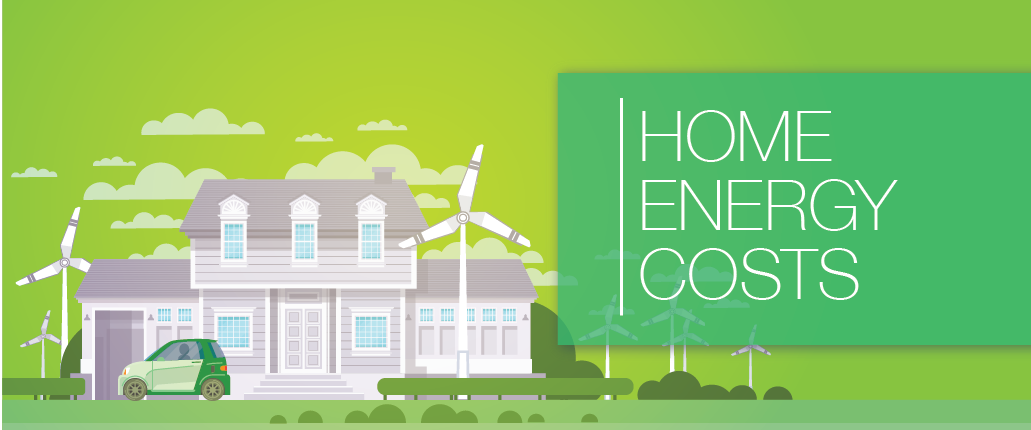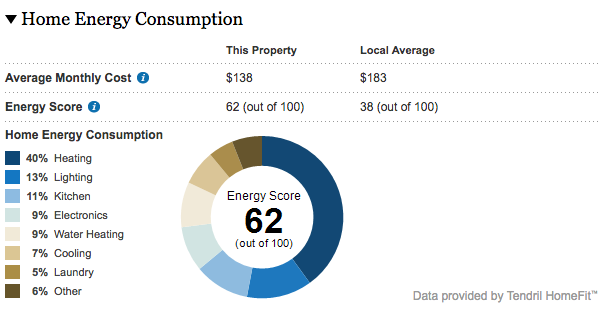You are viewing our site as an Agent, Switch Your View:
Agent | Broker Reset Filters to Default Back to ListHome Energy Costs Play Vital Role in Marketing Listings
August 17 2017

The real estate market is shifting—again. While upgrades like a swanky new kitchen or contemporary outdoor living space still draw attention, many buyers are becoming increasingly aware of the costs and benefits behind the walls.
Home energy consumption levels are top of mind for many consumers who recognize that making the monthly mortgage payment is just a portion of the total amount needed to operate a household. Discerning homebuyers want to fully understand costs such as heating, cooling, lighting, electronics and even laundry.
The trend is no surprise considering recurring variable expenses consume up to 4 percent (roughly $2,200 per year) of the average household's income, before taxes, according to the Insulation Institute.
Those dollars speak volumes to every conscientious buyer and can be a valuable marketing tool for sellers and agents.
Home energy consumption at a glance:
- The average U.S. household spends more than $2,200 annually on energy costs to heat, cool, and operate a home.
- Energy efficient homes are fetching higher prices on the housing market because their upgrades offer both reduced utility bills and avoided maintenance expenses.
- According to the National Association of REALTORS®' 2016 Profile of Home Buyers and Sellers, 84 percent of people surveyed believed a home's heating and cooling costs were "important" or "very important" (NAR 2016).
- Homes that disclose energy costs sell at a faster rate and with higher closing rates than those that do not.
For sellers, energy efficient homes that disclosed and marketed consumption costs sold at a faster rate and with higher closing rates than those that did not, according to a study conducted by Elevate Energy. On average, attached homes that disclosed energy consumption rates in their listings sold at a higher percentage of their original list price (97.2 percent) than non-disclosure homes (95.9 percent). The average sales price for attached homes included in the Chicago-area based study was $352,000, which means the average seller who disclosed energy costs received an additional $4,576 compared to the seller who did not disclose energy costs.
The study also revealed that "energy cost disclosure" (ECD) homes spent fewer days on the market than counterparts that did not disclose costs. Attached ECD homes were on the market for 69 days compared to 93 days for homes that did not disclose costs. (Source: Elevate Energy's Show Them the Money: How Energy Cost Disclosure is Transforming the Real Estate Market)
Buyers benefit as well. Real estate broker Craig Foley, chief of energy solutions at RE/Max Leading Edge, conducted a study of Greater Boston area homes to determine whether buyers preferred natural gas heating to oil, which tends to be more costly. His conclusion speaks volumes for would-be sellers. Homes that heat with natural gas earned $11 more per square foot (PSF) at the time of sale. That PSF value amounts to a $22,000 premium on a 2,000 square foot home.
"Those numbers," says Foley, "reinforced a number of studies nationally that said for every $1 of annual energy savings, it equates to $15 to $20 at the time of sale."
Bringing energy costs to the surface has become a common practice in many areas of the country, especially those hardest hit by extreme weather conditions, but across-the-board transparency for listings nationwide has not been the case—until now.
"Buyers cannot make informed decisions about the true costs of operating a home if energy consumption is not disclosed," said Dale Ross, chief executive officer of Realtors Property Resource® (RPR). "Our goal at RPR is to make a home's energy consumption data more transparent to consumers via our new Energy Score." Visit narrpr.com to see the energy score for your home or listing (access exclusively granted to REALTORS®).
RPR has partnered with Tendril, a leading provider of energy consumption data, to provide REALTORS® with a breakdown of "Average Monthly Home Energy Costs" for each of the platform's 166 million properties. The data, which appears on RPR's Property Details page as well as in its Property and Seller's Reports, includes an average monthly energy consumption cost, an Energy Score, a neighborhood comparison, and consumption breakdown by lighting, kitchen, electronics, heating, laundry and more.
Tendril's overall Energy Score ranges from 0 to 100 and serves as an indicator of a property's energy efficiency and utility costs. A home with a high score should have reasonably low energy use compared to a home with a low score, which may not be as energy efficient as it could be.

"We believe full transparency of energy consumption data is the next step in helping REALTORS® better market their listings and best serve their clients," said Ross.
To view the original article, visit the RPR blog.









